ANN/CHINA DAILY – At an art exhibition, a mother and her child stand side by side, each mesmerised by different facets of the display.
The mother sees echoes of her own youth, while her daughter is enchanted by the interactive, dreamlike environment — a captivating blend of maze, theatre, and amusement park brought to life through virtual reality and multimedia.
This scene vividly plays out in the mind of artist Cao Fei, showcasing how her work bridges generational divides.
She envisions older visitors appreciating the historical context and social commentary, while younger ones are drawn to the immersive, surreal aspects.
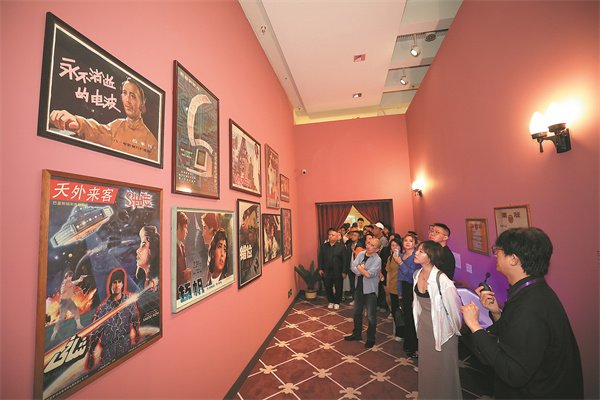
CHAOXI ZHOUHE (TIDAL FLUX)
Running at the Museum of Art Pudong in Shanghai until 17 November, Cao Fei’s solo show, Chaoxi Zhouhe (Tidal Flux), is generating significant interest.
“The exhibition is relatively long, and footfall may be much more than my other exhibitions at home and abroad, thanks to tourists, art lovers, and families with children. This will be an interesting opportunity and a new experience for me as an artist,” says the 46-year-old.
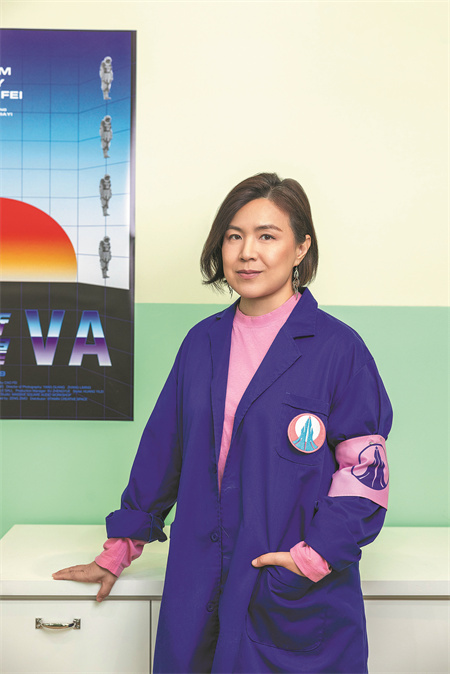
SYMBOLIC TITLES AND MEANINGS
The exhibition’s title, Chaoxi Zhouhe, was chosen by Cao and her curators: Nancy Spector from the United States, Tan Xue from Hong Kong, and Yang Beichen from Beijing.
Cao explains that chaoxi (tide) symbolises the essence of time and cyclical movement; various phenomena, such as the rhythmic phases of the moon and the menstrual cycles of women, operate in patterns akin to tides.
The term zhouhe originates from the work Guanzi Zhouhe by Guan Zhong, a philosopher from the Spring and Autumn Period (770-476 BC), signifying a state of harmonious coexistence between heaven and earth.
MAJOR TRANSFORMATIONS
The exhibition features around 30 groups of works spanning nearly three decades, including many of Cao’s signature and long-term projects.
Her works reflect the era in which they were created, offering a compassionate portrayal of societal evolution and the lives of ordinary individuals.
At a forum during the exhibition’s opening in June, Ye Ying, editor-in-chief of The Art Journal, noted that Cao’s works often reflect an intimate concern for individuals amid the changes in China and imbue ordinary people with dramatic expression.
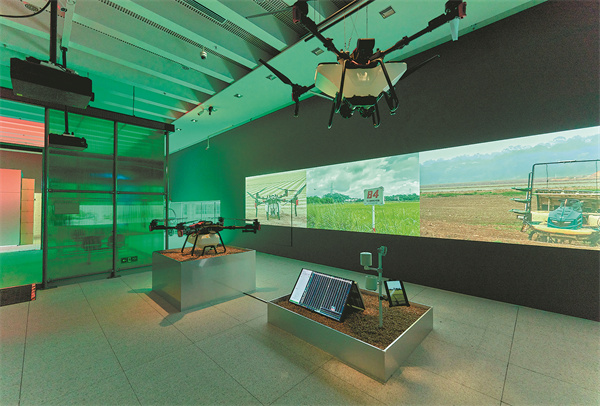
ROOTS AND EARLY INSPIRATIONS
Born into an artistic family in Guangzhou, Guangdong province, Cao’s formative years coincided with the trailblazing wave of China’s reform and opening-up. Her early major works capture the rise and fall of manufacturing.
Whose Utopia, created in 2006, mirrors the evolution of factories in the Pearl River Delta region, representing a microcosm of the nation’s “world factory” and a focal point for Chinese engagement and interpretation within the realm of globalisation.
EVOLUTION AND RENEWAL
A continuation of this theme is evident in Asia One (2018), created in a giant warehouse of JD, one of China’s largest e-commerce platforms. This work responds to the transformation and renewal of the manufacturing industry.
Tan, one of the curators, comments that during this period, Cao’s works were rooted in the fertile ground of the city, brimming with “urban sophistication”.
“She turned her inspiration towards the unsung heroes among those overlooked, little characters,” Tan says.
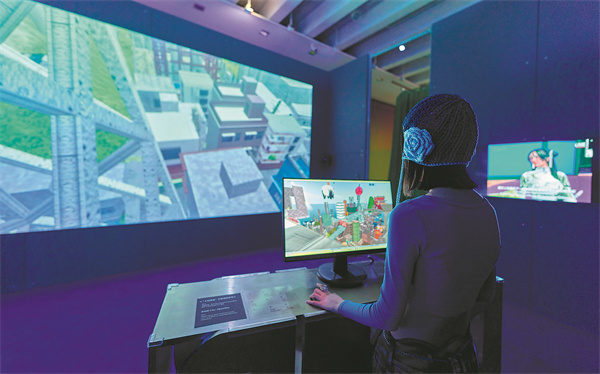
EMBRACING COMPLEXITY
Following her relocation to Beijing, Cao’s creative background expanded beyond the Pearl River Delta, becoming more complex and diverse in response to evolving times.
HX (2015-2024), also known as Hongxia, embodies locality and connects the past and future. Combining virtual reality, video, installations, and performance art, this project explores the possibilities of future societies and reflects the profound impact of technological advancements on human life and social structures.
TECHNOLOGICAL ADVANCES AND TRADITIONAL THEMES
While Cao has experimented with virtual reality and gaming technologies, she has recently returned to traditional subjects, exploring modern technological advancements in her ongoing project Dash (Jifei).
This unfinished project makes its debut at the Shanghai exhibition, presenting a novel farming scene where drones hover in the sky and robots swarm on the ground.
A JOURNEY THROUGH THE VIRTUAL REALM
Over the past few decades, Cao has exhibited her works globally, including solo exhibitions at the Centre Pompidou in Paris and the Serpentine Galleries in London.
She describes the ongoing Shanghai show as a midterm retrospective, looking back to retrace her creative process and concerns at different points.
“It is new, but it is also old … It is the footprints of the era,” she says.
Many of the exhibition’s works are presented in multimedia formats, using photography, virtual reality, and video games.
As an early explorer in the virtual realm known as the “metaverse”, Cao has been working on multimedia art since the rise of the current generation of art consumers.
She sees this design as an epoch-making presentation compared to past Shanghai museum exhibitions, gaining acceptance from more audiences after nearly 30 years of multimedia creation and experimentation.
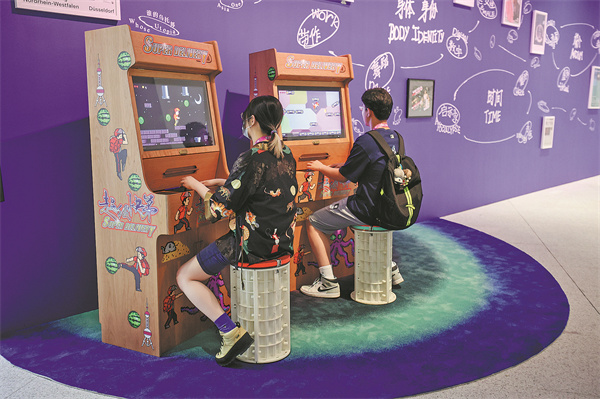
CREATING DIGITAL REALMS
Since 2007, Cao has been mirroring the entire era into a digital millennium, constructing a series of virtual worlds.
RMB City (2007-2022) is an immersive metropolis she built using Second Life, an online role-playing game. Her avatar, China Tracy, serves as the guardian spirit and head proprietress of the city, an adventurous and dazzling digital presence.
Cao’s works also show the process of derivative iteration from old to new media, much like the evolution of mobile phones from 1G to 5G, she says. As the metaverse gained wider acceptance, Cao continued her focus on cyberspace in 2022.
In the film Meta-mentary (2022), she documents people’s evolving opinions about the metaverse; in Duotopia (2022-2024), she layers and interlaces numerous utopian realms within the metaverse.
Her new avatar in the two-channel video installation Oz (2022) is an exquisite androgynous figure enveloped in an electrifying atmosphere — a fusion of machine, octopus, and anthropoid, this post-human creature exudes serenity.
A GENERATIONAL BRIDGE
Cao notes that visitors to the exhibition span generations.
Some older viewers see reflections of their collective past in her works like the HX project. Younger audiences may be drawn to the interesting, immersive multimedia elements, even if they do not fully understand the deeper meanings.
“Visitors can sit, lie down, and interact with the works, leading to unexpected discoveries. This interactive and engaging approach is what makes the exhibition truly captivating,” says Li Minkun, chairman of the Museum of Art Pudong.




